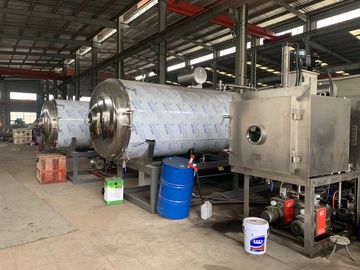In the realm of food preservation and beyond, sublimation freeze-drying emerges as a revolutionary technique, offering unparalleled advantages over traditional methods. At its core, sublimation freeze-drying harnesses the principle of sublimation, the direct transition of a substance from a solid to a gas phase, bypassing the liquid phase entirely. This unique process involves freezing the material at extremely low temperatures and then subjecting it to reduced pressure, causing the frozen water within the substance to sublime, leaving behind a perfectly preserved product with minimal damage to its structure and nutritional content. One of the most notable benefits of sublimation freeze-drying lies in its ability to preserve the intrinsic qualities of the material being processed. Unlike conventional drying methods, which often involve exposure to high temperatures that can degrade sensitive compounds and alter the texture and flavor of the final product, sublimation freeze-drying operates under gentle conditions that maintain the integrity of the original material.

As a result, foods retain their natural taste, aroma, color, and nutritional value, making them highly desirable among consumers who prioritize quality and authenticity. Moreover, the versatility of sublimation freeze drying extends far beyond the realm of food preservation. This technique has found widespread applications in various industries, including pharmaceuticals, biotechnology, and cosmetics. In the pharmaceutical sector, for instance, sublimation freeze-drying is utilized to stabilize and preserve sensitive drugs and vaccines, prolonging their shelf life and enhancing their efficacy. Similarly, in the biotechnology field, this method is employed to preserve enzymes, probiotics, and other bioactive compounds used in research and development, ensuring their long-term viability and functionality. Furthermore, sublimation freeze-drying offers significant advantages in terms of storage and transportation. By removing the water content from the material, this process reduces its weight and volume, making it more compact and lightweight compared to its fresh or dehydrated counterparts.
As a result, products can be stored and transported more efficiently, minimizing storage space requirements and logistical costs. This makes sublimation freeze-drying particularly valuable in situations where space and weight limitations pose significant challenges, such as during long-distance shipping or space missions. In addition to its practical benefits, sublimation freeze-drying has also sparked interest in the culinary world, where chefs and food enthusiasts alike are exploring its creative potential. From freeze-dried fruits and vegetables to gourmet instant coffee and desserts, the possibilities are virtually endless. By harnessing the power of sublimation freeze-drying, chefs can experiment with innovative techniques and ingredients to create unique culinary experiences that captivate the senses and push the boundaries of traditional cooking. Sublimation freeze-drying represents a paradigm shift in the field of food preservation and beyond. With its ability to preserve quality, enhance stability, and unlock new possibilities, this revolutionary technique is poised to shape the future of industries ranging from food and pharmaceuticals to biotechnology and beyond.